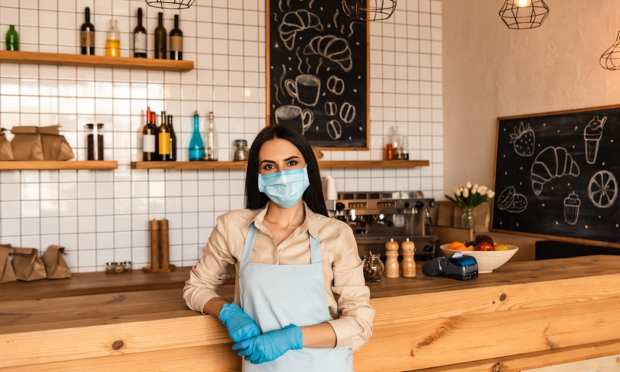‘Pandenomics’ Reinventing SMBs For What Comes Next

As PYMNTS researchers recently wrote, “news of the availability and distribution of COVID-19 vaccines has Main Street SMBs feeling optimistic about their chances of survival, yet uncertainty remains around when things will return to business as usual. PYMNTS’ research shows that a significant gap exists between when Main Street SMBs expect things to return to normal and when consumers do.”
And there you have it — a good piece of it, in any case — as Main Street USA contends with reports of renewed COVID-19 flareups hurting commerce at the heart of American villages.
PYMNTS surveyed close to 600 Main Street SMBs dealing in technology, construction/contracting, retail trade, manufacturing and professional services for December’s report, Pandenomics: Main Street SMBS, the 18-Month Outlook. It’s part of an ongoing series documenting the impacts and outcomes of the COVID-19 health crisis on small businesses.
Findings support the idea that moods have perceptibly lightened on Main Street.
 More Optimism, More Multichannel
More Optimism, More Multichannel
First things first: Main Street SMBs still in business as the year comes to a close are more optimistic than they were a few months ago. After all, they’ve made it this far.
“Our research shows that 54 percent of merchants now feel they are very or extremely likely to survive the pandemic, whereas 48 percent said the same in June. The recent news surrounding the approval of vaccines has helped further improve merchants’ perception of survival by 1.8 percentage points. Should a new lockdown occur, however, 8.5 percent fewer Main Street SMBs are now hopeful of survival,” according to PYMNTS’ new study.
A reason for their relative calm is that thousands of SMBs went digital-first in a heartbeat earlier this year and are now reaping the rewards of digital resilience. Cross-channel, multi-channel, omnichannel selling — whatever you call it, it’s working for Main Street SMBs.
“Firms that sell across multiple channels seem to have fared better than those that exclusively rely on a single channel for all of their sales. Only 17 percent of businesses that sell through more than one channel experienced a decrease in demand, whereas a third that sell exclusively through physical stores faced decreased demand. This shows how merchants that have succeeded in diversifying their sales channels have been better able to cope with the pandemic’s economic challenges, per Pandenomics: Main Street SMBS, the 18-Month Outlook.

More ‘Pandenomics’ By The Numbers
Findings like those cited have remained fairly consistent, and point to a store-centric retail base that’s rapidly reorganizing around convenience, safety and satisfaction.
“There is good reason for the positive optimism among Main Street SMBs: 46 percent of them experienced an increase in demand for their products or services. Technology firms have shown the greatest improvement, and 68 percent experienced growth during the last three months. Results for businesses in the retail sector, on the other hand, have been mixed, with 35 percent of retailers experiencing an increase in demand, and demand remaining stable for an equally large share. The remaining 30 percent experienced a decline in sales.”
The word on Main Street is that “67 percent of merchants expect to generate more sales online once the pandemic has subsided. This expectation is especially prevalent for merchants in the technology and manufacturing sector, 76 percent and 58 percent of whom expect to rely more on online sales than they did before the pandemic began, respectively,” per the study.
More than a third of merchants that sell mainly in stores said they’ll double down on digital. “This shows that businesses that are having success with online sales are becoming less dependent on foot traffic in their physical stores and that focusing on online sales will serve brick-and-mortar businesses well.”

